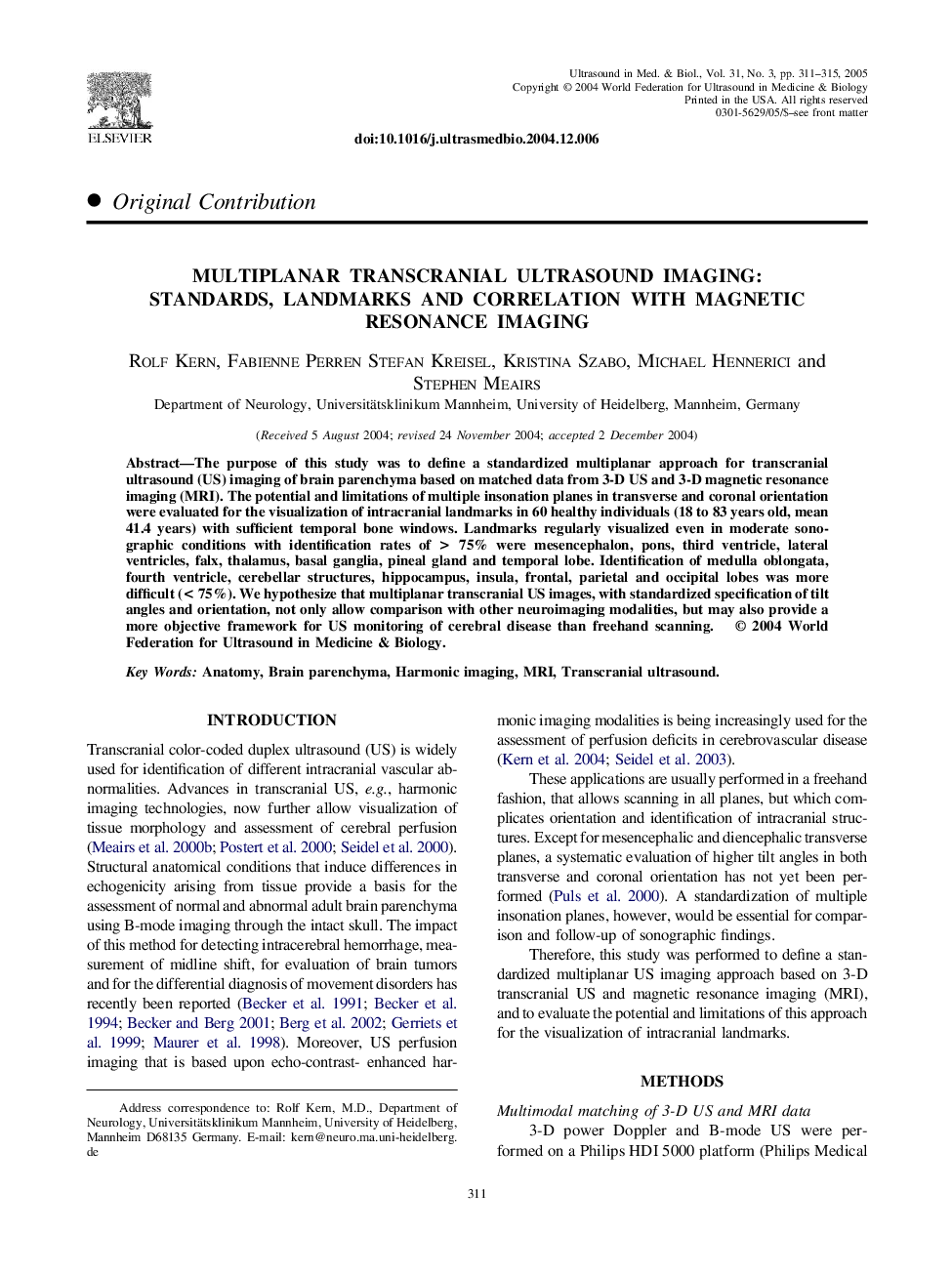| Article ID | Journal | Published Year | Pages | File Type |
|---|---|---|---|---|
| 10693178 | Ultrasound in Medicine & Biology | 2005 | 5 Pages |
Abstract
The purpose of this study was to define a standardized multiplanar approach for transcranial ultrasound (US) imaging of brain parenchyma based on matched data from 3-D US and 3-D magnetic resonance imaging (MRI). The potential and limitations of multiple insonation planes in transverse and coronal orientation were evaluated for the visualization of intracranial landmarks in 60 healthy individuals (18 to 83 years old, mean 41.4 years) with sufficient temporal bone windows. Landmarks regularly visualized even in moderate sonographic conditions with identification rates of > 75% were mesencephalon, pons, third ventricle, lateral ventricles, falx, thalamus, basal ganglia, pineal gland and temporal lobe. Identification of medulla oblongata, fourth ventricle, cerebellar structures, hippocampus, insula, frontal, parietal and occipital lobes was more difficult (< 75%). We hypothesize that multiplanar transcranial US images, with standardized specification of tilt angles and orientation, not only allow comparison with other neuroimaging modalities, but may also provide a more objective framework for US monitoring of cerebral disease than freehand scanning.
Related Topics
Physical Sciences and Engineering
Physics and Astronomy
Acoustics and Ultrasonics
Authors
Rolf Kern, Fabienne Perren, Stefan Kreisel, Kristina Szabo, Michael Hennerici, Stephen Meairs,
